The Trends and Statistics Underpinning Andy Farrell’s First Test XV
Inside: all the stats you could ever need to win that online argument.
The long wait is nearly over. Sorry, I got stuck on Rugby Cliche Mode for a second. Let’s try again.
The long wait is nearly over. Shit, sorry. Once more.
The long wait is nearly over (ah, bugger it, if you can’t beat ‘em, join ‘em). Tomorrow night at Cauldron Suncorp Stadium, the Lions will play an official, capped Test match (sorry, Argentina) in front of a live crowd (sorry, Boks) for the first time in 2,932 days, since the drawn third Test in New Zealand on 8 July, 2017.
Despite extensive therapy by methods both conventional and experimental, I’ve still not been able to suppress that fateful night from my memory (Kieran Read’s desperate, vain pleas of Romaine…, Romaine…, like a slightly confused anti-Brexiteer, will forever haunt my dreams), but alas.
I’m sure the last thing any Northern Hemisphere rugby fan wants is for a Kiwi like me to sit here and lecture you on the history, meaning, and raw emotion of the Lions. You’re already far more viscerally familiar with that than I. What you may be less familiar with, however, are some of the advanced stats and trends that have underpinned Andy Farrell’s first Test XV selections. Well, just your luck, as those are exactly what I’ll be discussing throughout the article! So, let’s cut the fluff and get to the numbers.
Unless otherwise stated, all stats discussed throughout this piece are drawn from Opta’s Lions Tour Stats Hub.
Front Row
Ellis Genge
Dan Sheehan
Tadhg Furlong
We can see immediately that metres gained with ball in hand was likely a key selection criterion for Farrell and his team, as Dan Sheehan (59) and Ellis Genge (57) lead the way with ball-in-hand among front rowers on this tour.
If we break this down on both an average metres gained per carry and an average metres gained per 80 minutes basis, the results look as follows:
Avg Metres/Carry (Top 3, Front Rowers)
Dan Sheehan (4.21 metres)
Ellis Genge (3.16 metres)
Ronan Kelleher (2.71 metres)
Avg Carry Metres/80 minutes (Top 3, Front Rowers)
Dan Sheehan (30.45 metres)
Ellis Genge (27.14 metres)
Luke Cowan-Dickie (26.34 metres)
These two are not only carrying the ball, but doing so effectively, too, as Genge (5) and Sheehan (3) also lead the way in defenders beaten among front rowers on tour, and are also the only two front row options to have made a line break.
If we analyse attacking rucks hit and attacking ruck effectiveness % (essentially, this is a measure of whether your attempted cleanout was successful), Tadhg Furlong begins to come into his own. He has hit the third most rucks of any front rower on tour, though, notably, with the lowest success % of any front rower.
Finlay Bealham’s numbers also stand out here, hitting the second most attacking rucks, with the best effectiveness percentage (93.8%). He’s a tad unlucky to have missed the 23 altogether. Damn shame that scrummaging straight is also a criteria for props.
Turning to the defensive side of things, the two starting props have actually completed the fewest tackles of any front rower on tour. In contrast, Kelleher has been exceptionally busy in this regard, making seven more tackles than Schoeman, the next highest front-row tackler, in 40 fewer minutes. I think this may have been a key reason Kelleher beat out Cowan-Dickie for the bench spot.
Kelleher (3) also leads the way for dominant tackles.
In terms of defensive ruck effectiveness, the three hookers and Schoeman have been the only front rowers to have literally any impact, with the other five tour props so far registering a 0% effectiveness rate in this area. It’s not catastrophic, but it’s also not ideal.
Finally, at lineout time, Sheehan (96.2%) and Cowan-Dickie (94.11%) have been far safer than Kelleher (84.2%).
Also, before we get any further, have I been correct all these years in thinking that Tadhg is pronounced like the first syllable of Tig-er? Please let me know in the comments.
In exchange, Ioane = Yew-ah-knee, not Eye-oh-knee, and it’s Sah-vee-ah, not Surveyor. Look at us all learning and growing!
Locks
4. Maro Itoje (c)
5. Joe McCarthy
It’s not like there was ever any jeopardy that tour captain and certified Lions Legend™ Maro Itoje wouldn’t start the Tests, but just in case, the stats more than justify his inclusion. If you want the key stat: Itoje (71) has so far hit 16(!) more attacking rucks than any other Lion on tour, with JvdF (55) hitting the next most. Itoje has also attempted the third-most tackles, won the second-most turnovers, and has both won and stolen the most lineout ball. Yeah, not bad.
Itoje’s numbers stand out so much that I need to compare him to all players on tour, not just the locks. However, if we look at Itoje’s locking partner, Joe McCarthy, it’s also easy to pinpoint why he was selected. Namely, McCarthy has carried the ball the equal-most of any lock on tour, making the second most metres (56), only two behind Itoje (58).
The other thing worth noting here is that the three locks selected (including Tadhg Beirne at 6) have completed the most tackles of any lock on tour, while Beirne and Itoje are by far the most effective at defensive ruck time.
At lineout time, expect Itoje to be the primary target, as Beirne (10) and McCarthy (5) have won fewer lineouts combined than Itoje (26) has individually. Expect Conan and Curry, who both have four lineout wins on tour, also to be used as options, providing the Lions with an excellent balance and five (!) genuine lineout targets. There is no doubt in my mind they will contest the Wallabies’ lineout hard.
Ultimately, this means that four of the five tight-five players with the most raw metres gained on tour have been selected in the Test starting XV (Tadhg Furlong, probably the best scrummaging tighthead of the past decade, being the exception), signalling a clear focus in this area.
Back Row
6. Tadhg Beirne
7. Tom Curry
8. Jack Conan
Likely no two shirts have generated as much conversation and controversy as the six and seven jerseys (if you didn’t think Conan should be the number eight, I don’t know what to tell you).
Whether you’re spewing at Jac Morgan’s exclusion, were hoping to catch a glimpse of Henry Pollock, or thought Josh van der Flier or Ollie Chessum were a bit unlucky, you likely already hold a strong view here. I won’t try to convince you otherwise. I will, however, try to show you why these three have been selected instead, to the best of my ability.
First, before we get to those two positions, let me tell you a little secret. Whisper it, but statistically, Jack Conan hasn’t been that good so far on tour. I’d obviously still start him in a heartbeat, but it’s worth being aware of.
Conan’s defensive ruck effectiveness stats, in particular, don’t make for pretty reading. Watch for him to put in a 10/10, MOTM performance tomorrow, now, inevitably.
Now, the two bigger battles. The six shirt seemed to come down to Beirne vs Chessum, while the seven shirt appeared to be a shootout between Curry and Morgan (full disclosure: I’d have picked Morgan). Here’s a thorough comparison of both battles, with the winners in each category highlighted.
I’ll leave you to make up your own minds.
It’s worth noting that the two men who won the starting shirts pass much more often than the guys they beat out, suggesting distribution may have been a focus in the loose forwards. Curry’s ability at lineout time and higher carrying work rate (though, notably, not necessarily effectiveness) may have also played their part. The Beirne decision is more understandable, though Chessum notably leads the way on two per-80 metrics: tackles/80 minutes and carries/80 minutes.
Wherever you ultimately land, Jac Morgan is really unlucky to not even make the Test 23, though it was pretty much start or bust for him, as I’ll get into when analysing Earl’s bench spot.
Something these stats don’t capture is that Tom Curry has been the only loose forward on tour to maintain a 90+% (93.9%, to be precise) effective ruck percentage on attacking ball, which I suspect was a significant factor.
Halfback (Scrumhalf)
9. Jamieson Gibson-Park
It’s my article, and it’ll be a dark, cold day in Hell before I lead with calling them scrumhalves. Whenever the Northern Hemisphere finally starts winning some World Cups, then you guys can get some Big Ideas about naming the positions.
Until then: you’re a halfback, Antoine.
Anyway, if you haven’t all thrown your devices away in incandescent rage, this JGP fellow is really good, hey? Who knew? Apparently, none of Taranaki, the Blues, Hurricanes, All Blacks, or Maori All Blacks, who all had him variously in their systems from 2012-2016, in a fatal failure of talent ID.
It has been blindingly obvious for about three years now that JGP was going to be the starting Test halfback on this tour, so there’s probably not too much extra I can tell you, but here are a couple of tidbits.
One notable point is that JGP has only missed one tackle on tour, compared to five for Mitchell and three for Williams, though it should be noted that Mitchell has played almost an entire extra 80 minutes compared to JGP, who has primarily been kept on ice.
Otherwise, if we compare the four halfbacks on tour on a passes per 80 minutes basis, here is the outcome:
Tomos Williams: 89.11
Alex Mitchell: 85.3
Jamison Gibson-Park: 69.5
Ben White: 61.1
I’m not entirely certain what this tells us (likely, a lot about the 10s they’ve played with most often), but it’s bound to be something, and I didn’t want all that math to go to waste.
Really, though, these stats can’t fully capture what JGP offers in terms of ‘cripsness’ and accuracy of pass, tactical kicking, game management, marshalling his forwards, on-field communication, leadership, and more. I suspect I’m about to say much the same about Mr. Unquantifiable himself at number 10…
First-five-eighth (Flyhalf)
10. Finn Russell
See above for my thoughts on calling it a ‘flyhalf.’ More like a when-pigs-fly half.
Trying to analyse or statistically quantify Finn Russell is akin to revealing a magician’s secrets. I flat-out refuse to do it. Next.
(If you must know, no halves player has more line break assists, offloads, or turnovers won than Russell, but that barely scratches the surface of the sheer overwhelming vibes on offer.)
The Midfield
12. Sione Tuipulotu
13. Huw Jones
(Notice how I’ve cleverly swerved the second-five-eighth vs inside centre debate there?)
I said that no positions have generated more debate than the back row, and I stand by that, but the midfield has possibly come the closest.
Ultimately, with Gary Ringrose unavailable and Finn Russell selected at 10, this became largely academic, as it almost made too much sense to choose the established Scotland 10/12/13 combination. There was really no wrong decision here, and statistically, you can throw a blanket over the four midfield options, except for a couple of key areas, highlighted below:
Namely, Huwipulotu are well clear regarding metres gained with ball-in-hand (in conjunction with selecting the best tight five by this metric, ball-in-hand seems to be a massive emphasis for Farrell).
Tuipulotu (15) has also beaten more than twice as many defenders as any other midfield option. Finally, Ringrose’s attacking effective ruck percentage of 72.2% is quite low, particularly compared to Jones’ outstanding mark of 93.5% from a higher volume than Ringrose.
I believe a confluence of these factors dictated this midfield selection.
The Back Three
11. James Lowe
14. Tommy Freeman
15. Hugo Keenan
At least, unlike JGP, we all broadly knew in New Zealand that James Lowe was bloody good and on the fringes of All Black selection, before he disappeared and cleverly re-branded as James O’Lowe. You may think I sound salty here, but really, I applaud Ireland’s (and Scotland’s) excellent global talent identification, scouting networks, and proven track record of improving players within their systems. Wales, less so, as I can assure you no one else was racing to sign Blair Murray, and I had to triple-check it was the same runt I enjoyed watching run around for Canterbury a few years back, when he first popped up on the Welsh radar. As for England? Two words: Willi Heinz. But that’s a hell of a tangent (get used to it, if you plan on sticking around).
All that to say, on the left wing, it was always going to be James Lowe, and I’m sure that, deep down, even Duhan knew that. Unfortunately, RugbyPass doesn’t track high ball success percentages (i.e. how many bombs you catch/drop) or even raw kicking metres, two areas I suspect Lowe would excel at, so it is harder to quantify his contributions.
On the other wing, there was an almighty battle between Hansen and Freeman, with Freeman only edging the contest due to Hansen’s injury. Otherwise, I strongly suspect this would have been an all-Irish back three. One key reason for this is that no one on tour has a better attacking ruck effectiveness percentage than Hansen’s (min. 10 rucks hit) mark of 96.8%, while no other back on tour has hit more rucks than Hansen’s 13 defensive rucks. Additionally, Hansen (8) had also been leading the way for linebreaks on tour.
They’re both outstanding options and it’s a hell of a headache to have if Hansen is fit for the next test.
Interestingly, Hansen and Freeman have also led the way in turnovers conceded on tour (Pollock is the only other with more than five), suggesting Farrell gives his right wingers a bit more license than others to try things.
Finally, we come to Hugo Keenan at the back, another decision made straightforward by Blair Kinghorn’s unavailability. Even had this not been the case, I suspect Keenan had the inside running anyway for several reasons.
At the risk of sounding like a broken record, attacking ruck effectiveness percentage is likely an important factor. It’s only from a small sample size of 8, and Kinghorn’s mark of 91.7% is also excellent, but Hansen is operating at 100% effectiveness here. Keenan has also beaten four defenders to zero for Kinghorn, and has been averaging 52.48 metres per 80 and 9.6 carries per 80, compared to 15.23 metres per 80 and 6.9 carries per 80 for Kinghorn.
The Bench
To publish this article in a timely manner (i.e. before the Test starts) and also have a chance to enjoy my Friday night (not that I don’t enjoy writing these), I simply don’t have time to get into the bench in the level of detail I’d like to, other than to quickly say, Ben Earl has been outstanding carrying the ball, making the second most metres on tour so far, and has also beaten the equal most defenders along with Sione Tuipulotu. Look at him, rubbing shoulders with all the outside backs in these stats!
I’d hate to try to tackle a fresh Earl after already playing 50-60 minutes of Test rugby.
Overall, if I had to boil it down to three key areas I reckon Andy Farrell has leaned on when selecting this XV, it would be the following:
Carrying/ball-in-hand work: Let’s physically batter them.
Lineout: I will be shocked if the Lions don’t aggressively target this particular setpiece and even look to kick the ball out more often to generate extra lineouts, with five jumpers selected.
Attacking ruck effectiveness: Secure your own goddamn ball, and do it quickly and efficiently!
And that’ll be that for now! Check back here at the same time next week for more on the Lions bench, and, almost certainly, my analysis of the first Test, too!
Until then, enjoy the rugby, and, if you’re so inclined, the associated 73,245 beers.
Thanks for reading! Like my writing? I also write about New Zealand and global cricket over at Beyond Cow Corner. If that sounds interesting to you, you should consider subscribing:
As you can (hopefully tell) a lot of effort and research goes into pieces like these, particularly for things like per-80-minute stats, which I created manually based on RugbyPass’ more basic stats. I fit this in between working full-time, but I’d love to make it more permanent. If you’d like the same, please consider supporting me via Buy Me A Coffee. For more info on how your support helps me produce this work and what your contributions go towards, see my About Page!
Like my work, but not that much? Totally fair enough! I’ve also sold past a million of these sales pitches in my time. If you still want to support men without contributing financially, the best thing you can do is share this article far and wide: whether that’s with friends and family, teammates at your local club, on Reddit, in your obscure rugby discord server, or tomorrow night at the pub, I cannot emphasise enough how helpful word of mouth is.
Just keen to continue reading about rugby? Makes sense! If you liked this article, I think you might also enjoy:




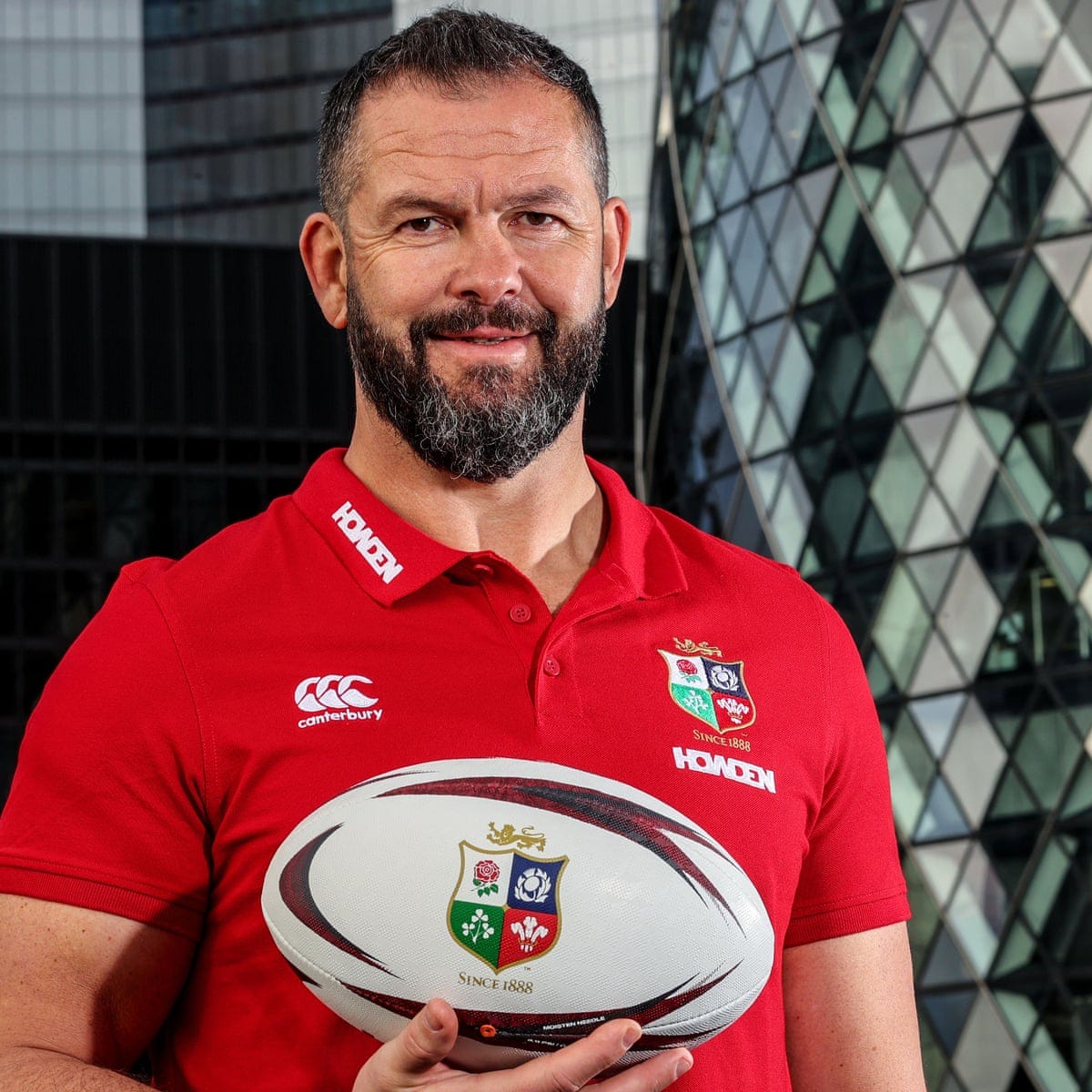


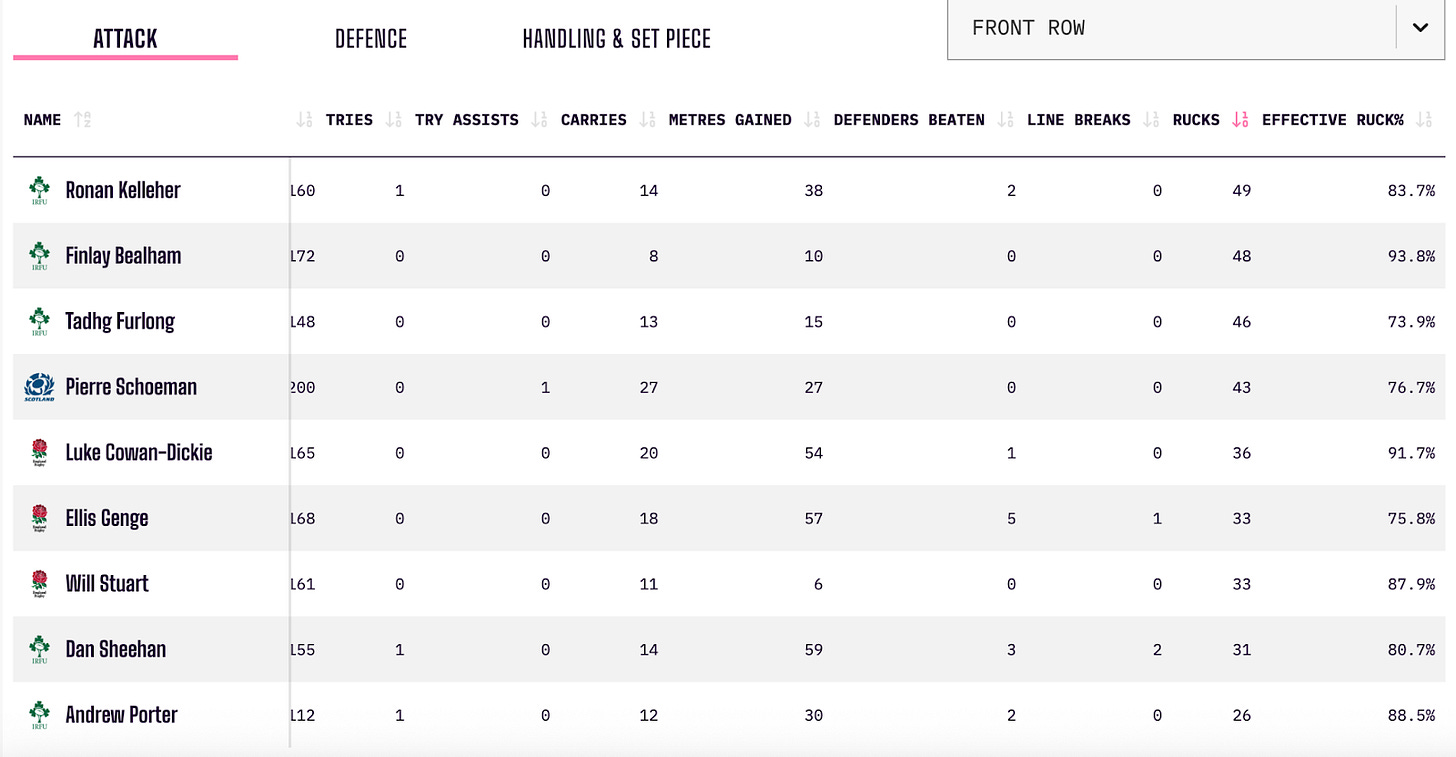
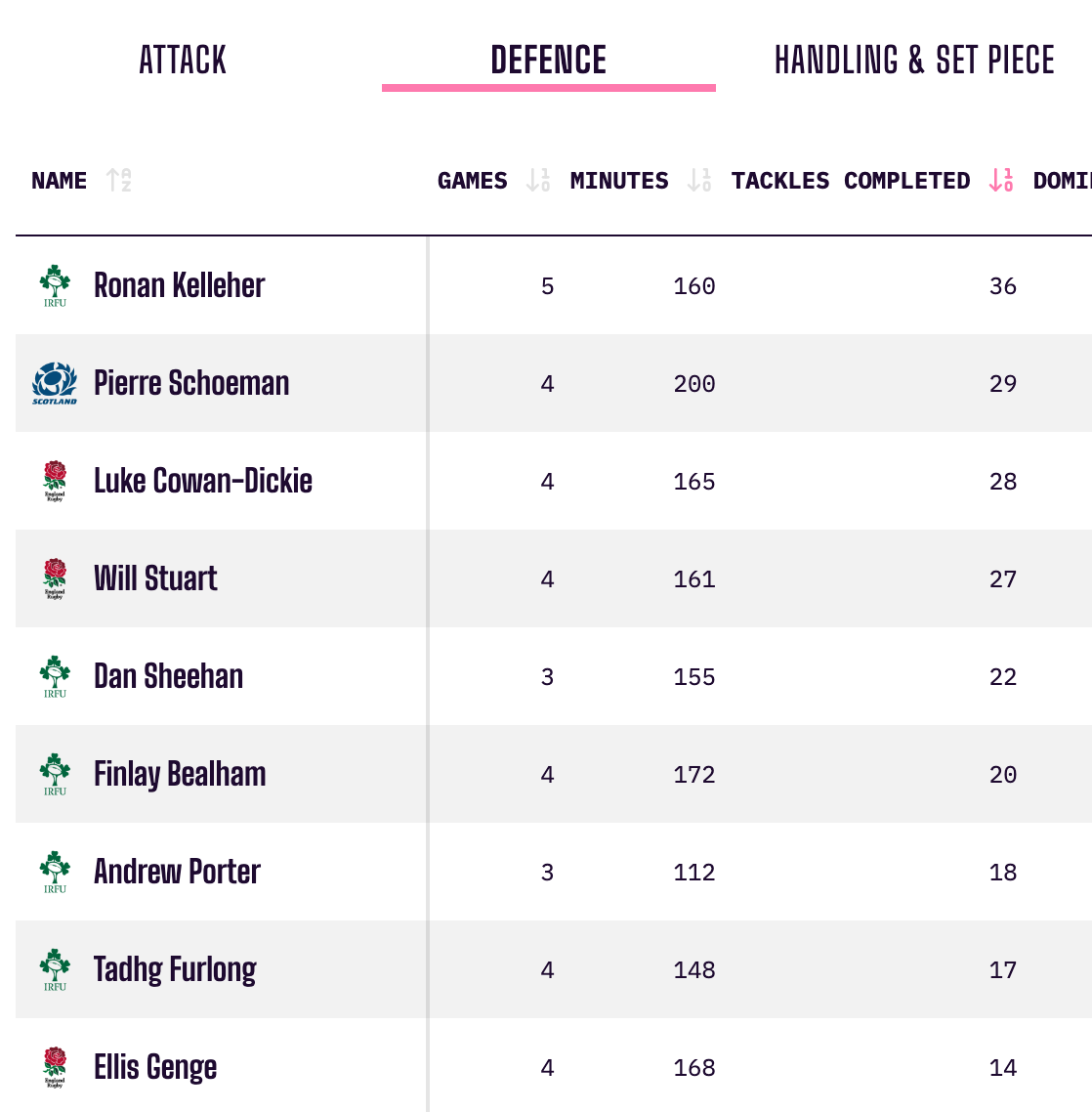
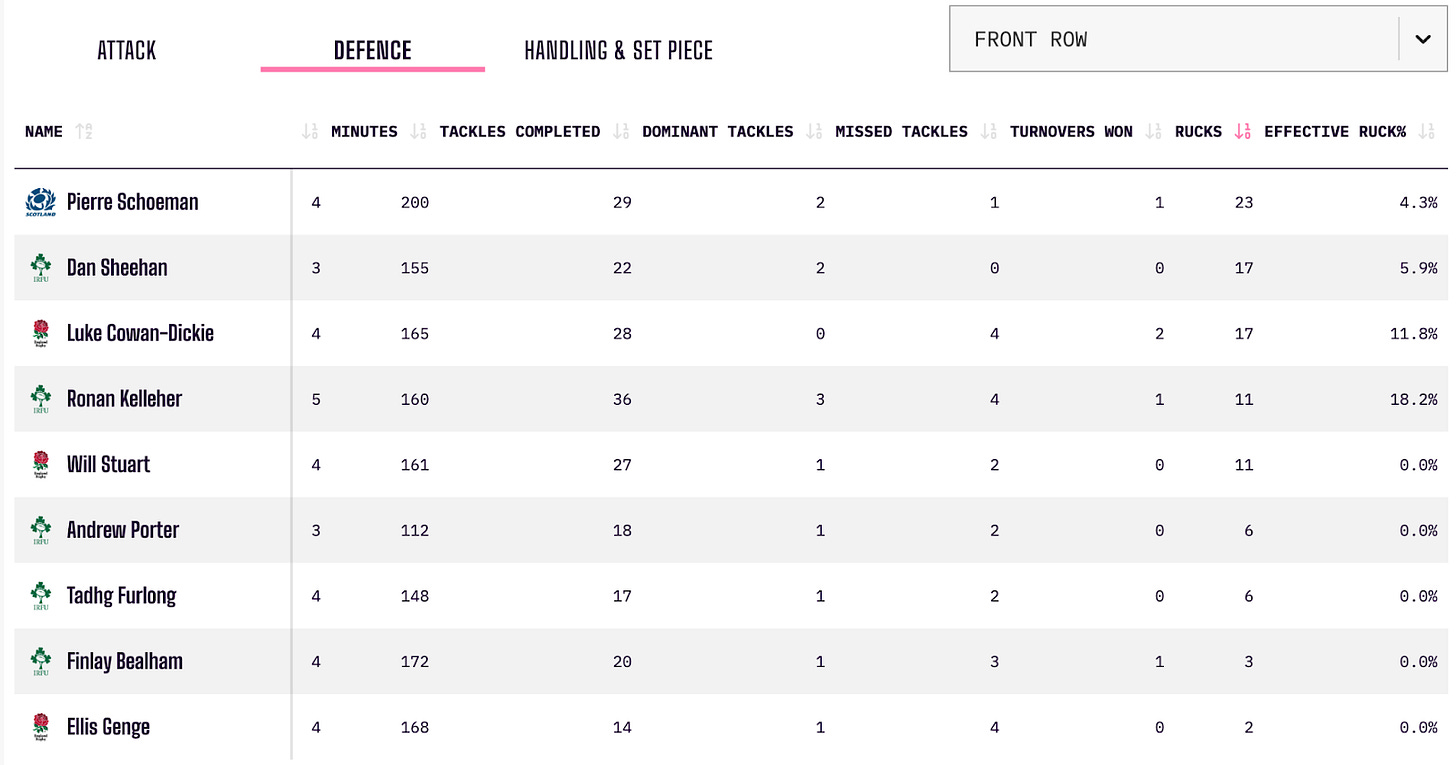

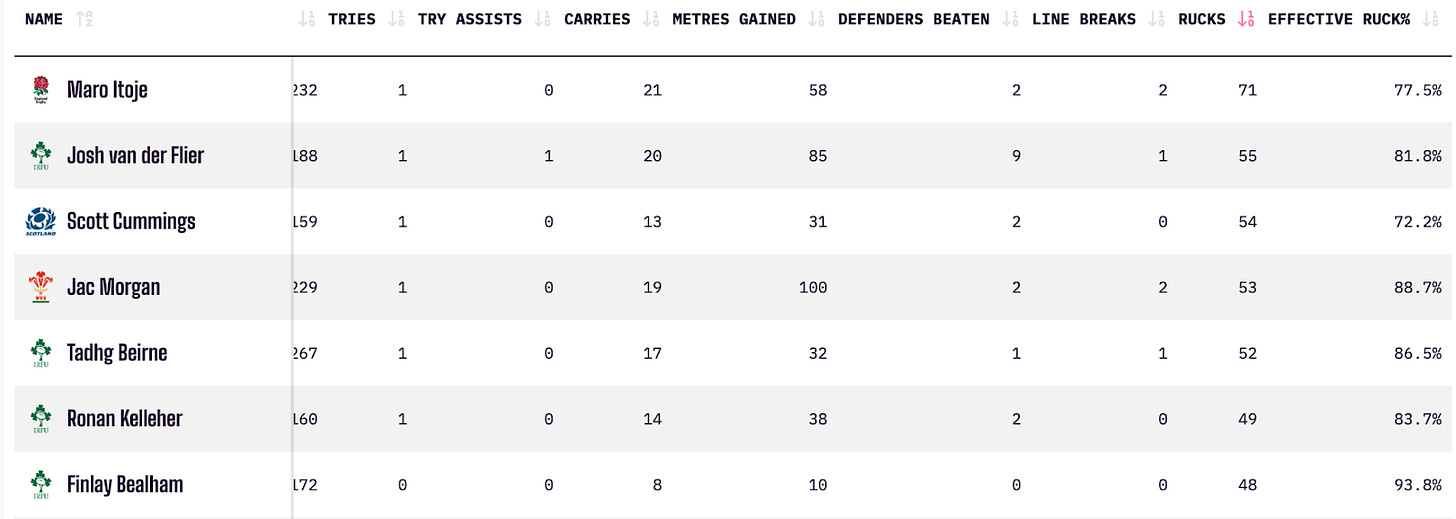
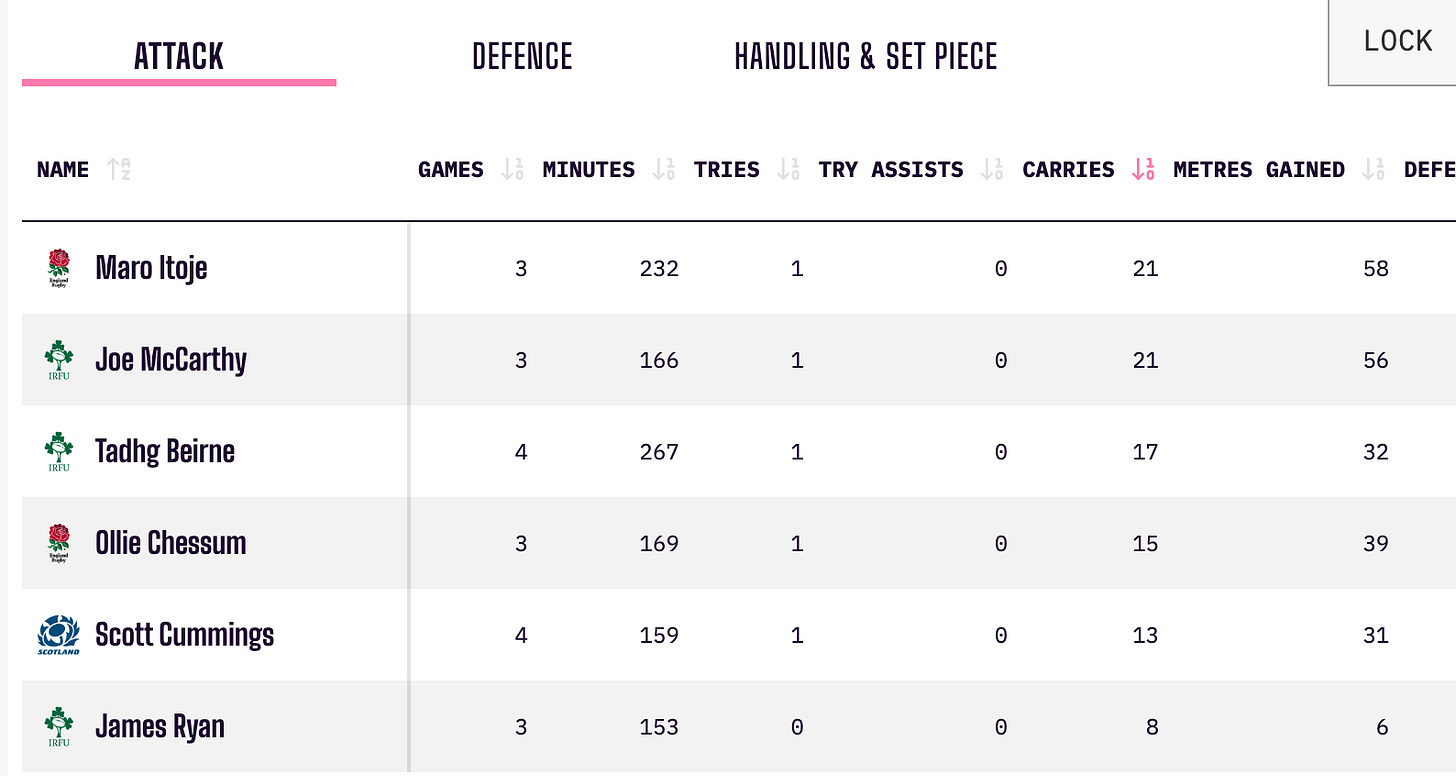
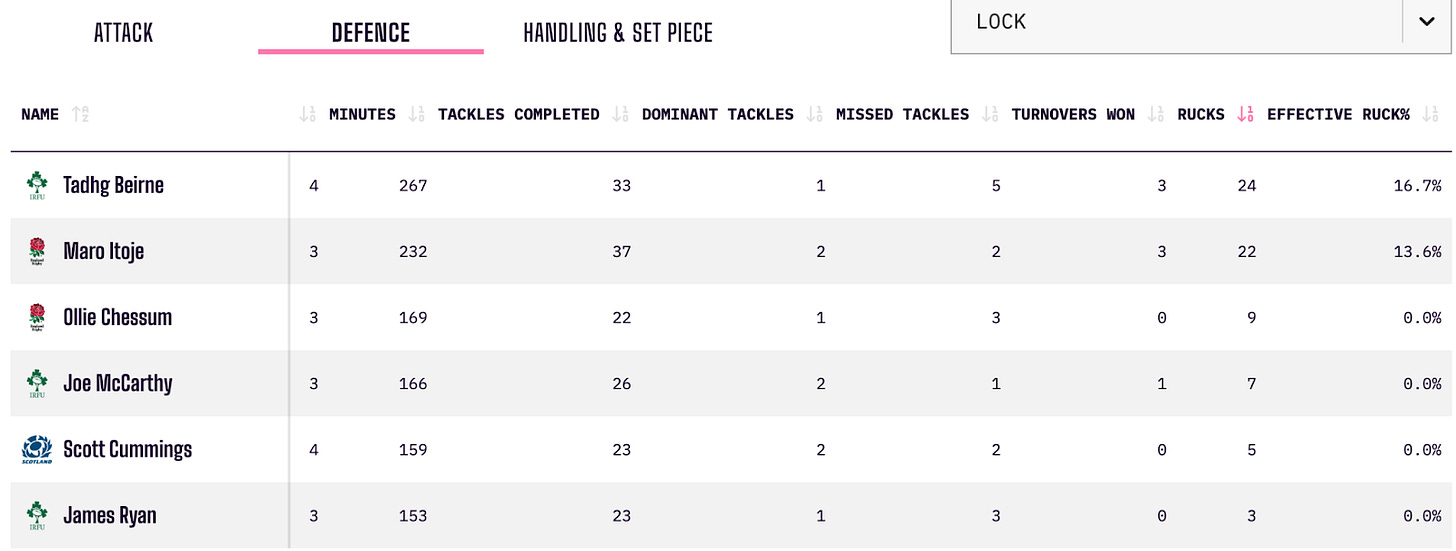
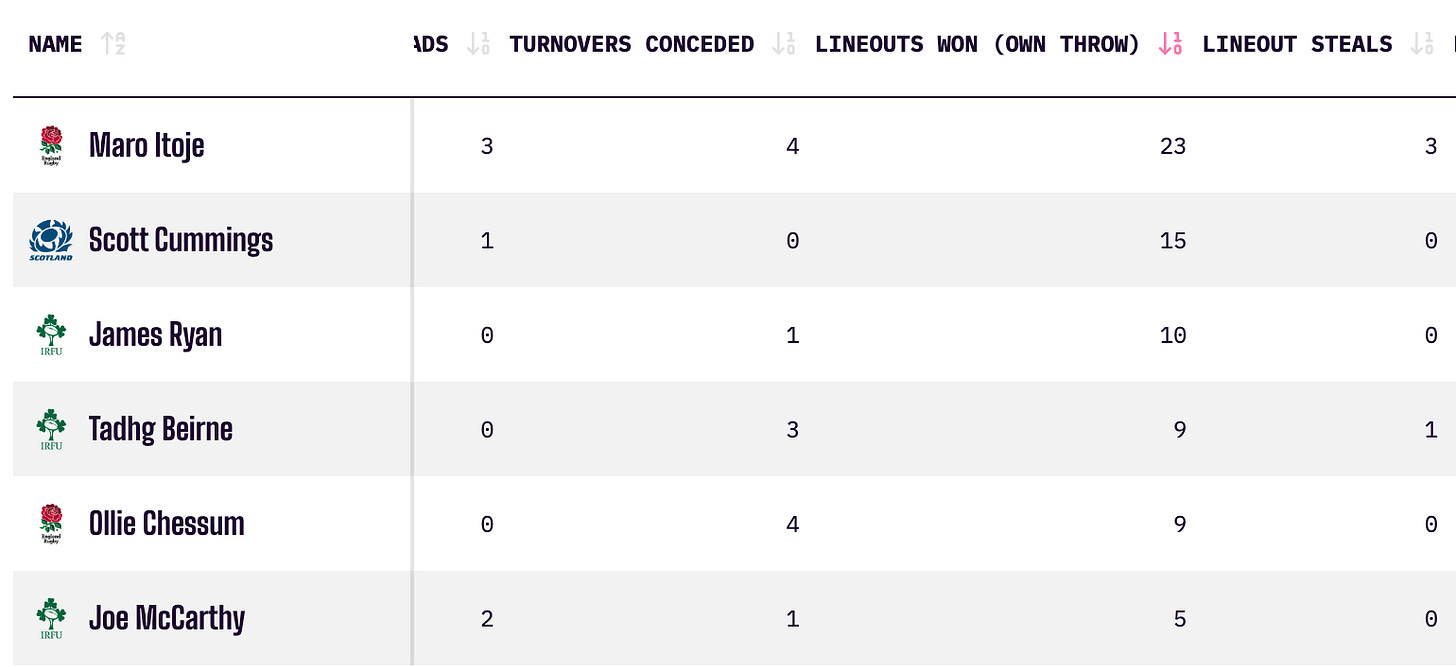
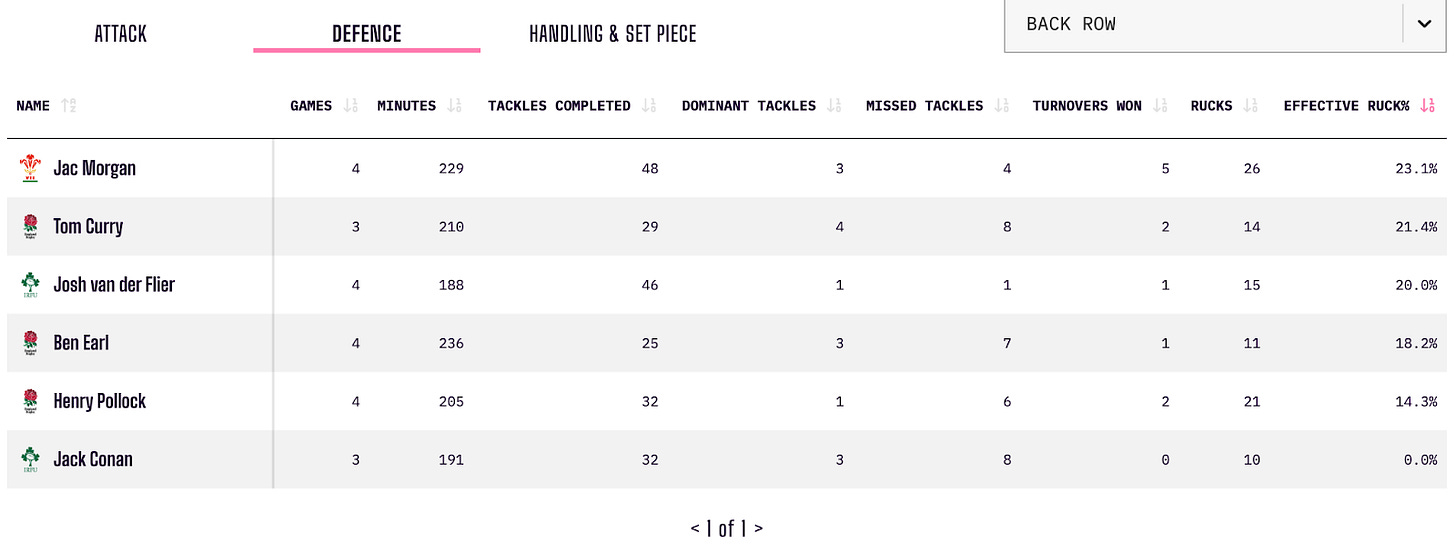

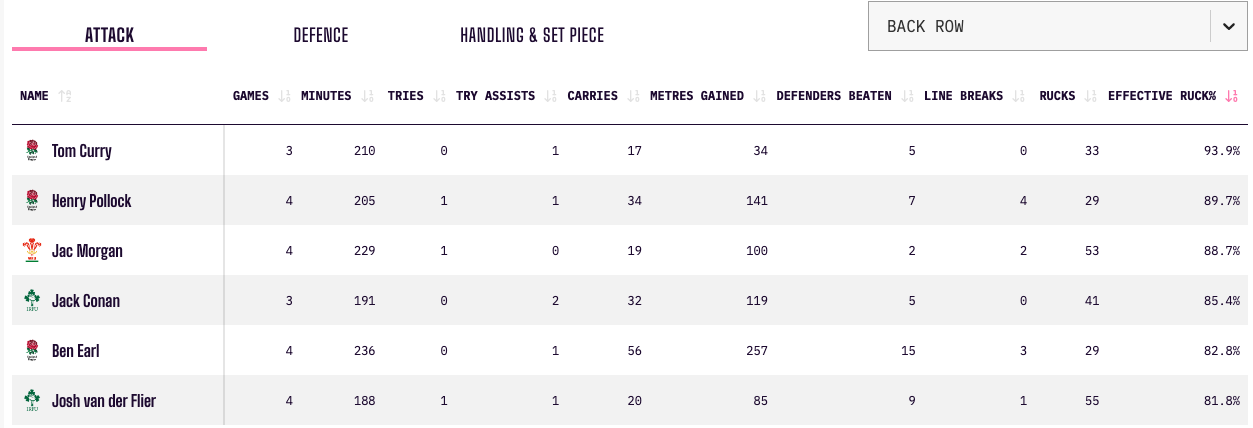
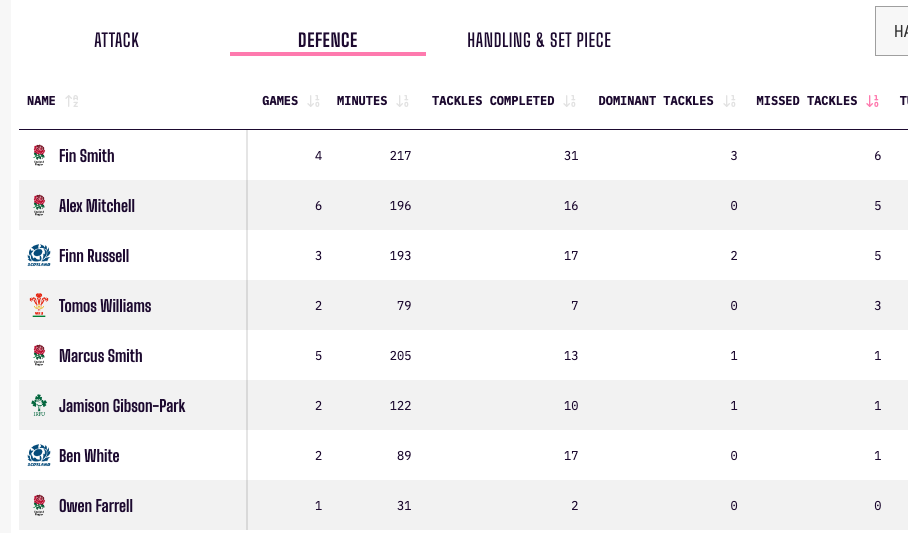




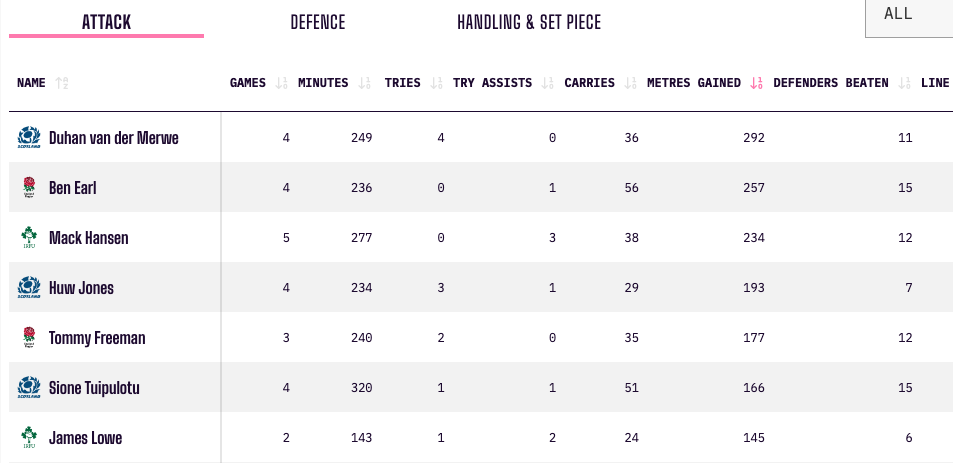
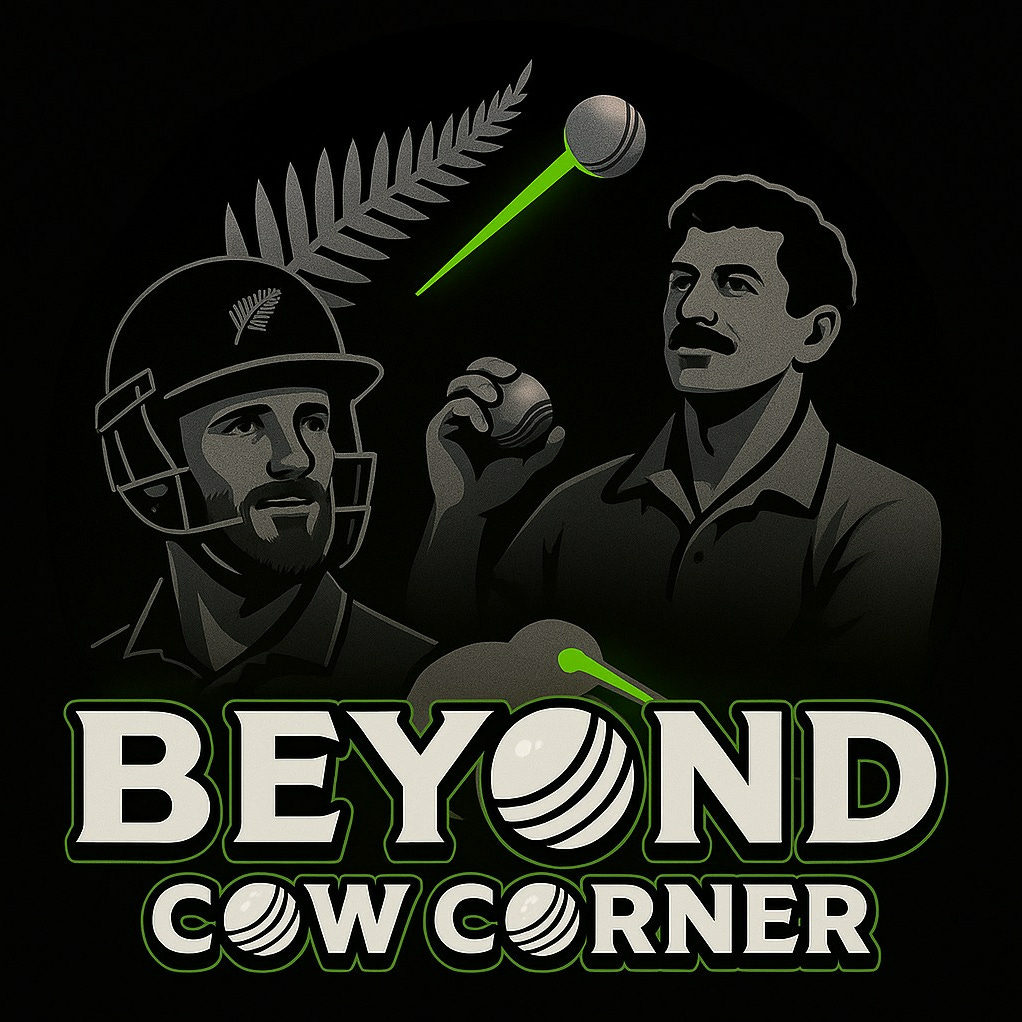
Great to see some actual data being used - nearly cried to see a per 80 minute stat! Shout out to my man Pierre who has been awesome all season. The loosehead depth is ridiculous and I wouldn't be surprised if he is involved in the third test.
“(Kieran Read’s desperate, vain pleas of Romaine…, Romaine…, like a slightly confused anti-Brexiteer, will forever haunt my dreams)” 😂 Very good. I remember that moment vividly, too.